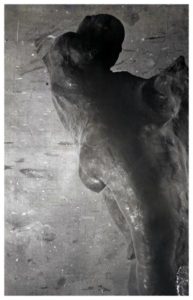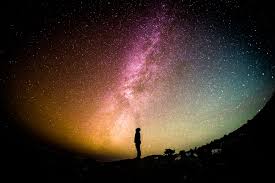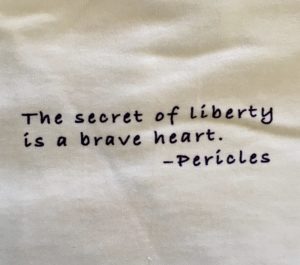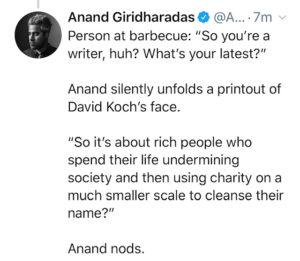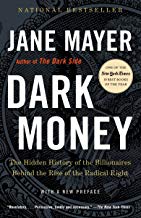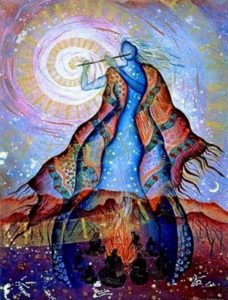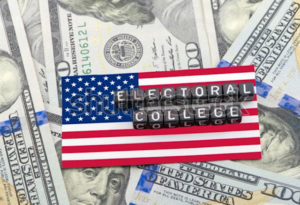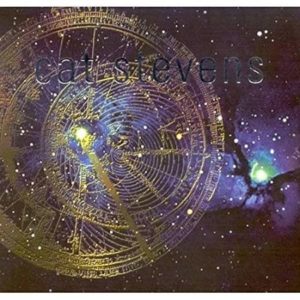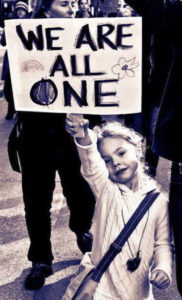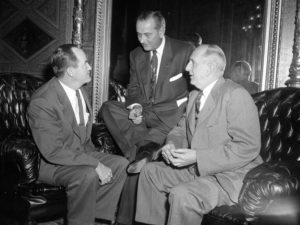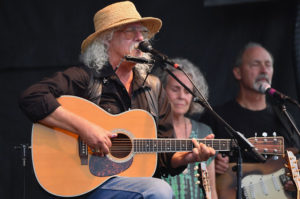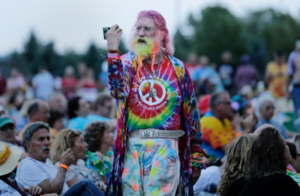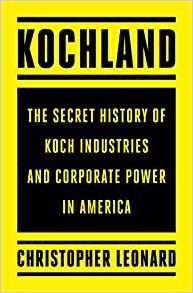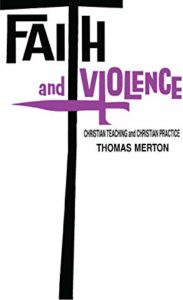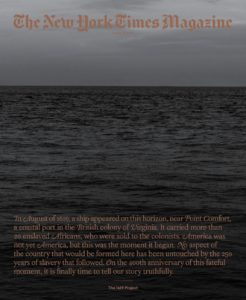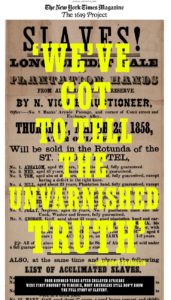Make of us a garland.
August 31, 2019Rilke:
We are not poor. We are just without riches,
we who have no will no world:
marked with the marks of the latest anxiety, disfigured, stripped of leaves.
Around us swirls the dust of the cities,
the garbage clings to us.
We are shunned as if contaminated,
thrown away like broken pots, like bones,
like last year’s calendar.
And yet if our Earth needed to
she could weave us together like roses
and make of us a garland.
For each being is cleaner than washed stones
and endlessly yours, and like an animal
who knows already in its first blind moments
its need for one thing only…
to let ourselves be poor like that…as we truly are.
-The Book of Hours III,16
“…a discovery that respects the hiddenness and in communicability of each one’s personal secret, while paying tribute to his presence in the common celebration.”
-Thomas Merton, Seasons of Celebration
More from Richard.
August 28, 2019Most people believe that physicists are explaining the world. . . . They are only dancing with it. —Gary Zukav [1]
☆☆•*¨*•.¸¸
Fr. Richard Rohr, Center for Action & Contemplation:
The more ways of knowing we use, the closer we come to understanding, and yet the full picture will always elude us. In this way, mystery is endlessly knowable.
From our own experiences we know that reality is not a seamless whole. Multiple realities rise, recede, and eclipse on our cognitive horizons as subuniverses that we inhabit from time to time. . . . The portals to these universes are not always cognitive. Perhaps they can be entered through dance and song and story.
The superstring theory provides useful analogies. . . . Physicist Brian Greene says, “If string theory is right, the microscopic fabric of our universe is a richly intertwined multidimensional labyrinth within which the strings of the universe endlessly twist and vibrate, rhythmically beating out the laws of the cosmos.” [3] The theory speaks of universes coiled into infinitesimal loops that may hold the secrets of all forces in the cosmos. The beauty of the theory is that it is dynamic and rhythmic. It is a resonant and dancing universe that invites us to view its mysteries. . . .
Hopi elders engage multiplicity by referring to the ineffable as “a mighty something [a’ni himu].” [5] Wisdom instructs the elders that one cannot stake life on limited human perspectives; there must be more. And so the elders inquire into the nature of ontology, social location, and the universe with the humble acceptance of an abiding wonder for “the thing not named.”
[1] Gary Zukav, The Dancing Wu Li Masters: An Overview of the New Physics (Morrow Quill Paperback: 1979), 35.
[3] Brian Greene, The Elegant Universe: Superstrings, Hidden Dimensions, and the Quest for the Ultimate Theory (Vintage Books: 1999), 18.
[5] See John D. Loftin, Religion and Hopi Life in the Twentieth Century (Indiana University Press: 1991), xv-xvi.
My new favorite quote.
August 27, 2019Shifting the Cosmic Paradigm
August 26, 2019We’re reaching a fork in the road; two paths are diverging on planet Earth, and the one we choose will make all the difference for the life of the planet. Shall we continue our medieval religious practices in a medieval paradigm and mechanistic culture and undergo extinction? Or shall we wake up to this dynamic, evolutionary universe and the rise of consciousness toward an integral wholeness?
-Ilia Delio, a Franciscan sister and scientist
From Fr. Richard Rohr
We are called to make the paradigm shift to an utterly new cosmology and worldview. I believe, even unbeknown to themselves, many are leaving organized Christianity now because these two cosmologies no longer coincide.
Darkest Money
Today, August 26th, the U.S. president who called himself an environmentalist, addresses climate change:
“I feel that the United States has tremendous wealth. The wealth underneath its feet. I’m not gonna lose that wealth on dreams, on windmills, which frankly aren’t working too well.”
#DreamsAndWindmills
Jane Mayer [Staff Writer at The New Yorker/author of Dark Money]:
“Lee Fang, who was the first to report on the Kochs’ covert Tea Party role, argues that far more than appreciated, David Koch’s legacy includes electing Trump.”
DAVID KOCH’S MOST SIGNIFICANT LEGACY IS THE ELECTION OF DONALD TRUMP
Many obituaries published in recent days examine Koch’s history of polluting the environment and political system, how the donor network he helped lead mobilized opposition to addressing climate change, transformed our election laws to allow unlimited secret spending by the very rich, and systematically fought any regulation, labor reform, or tax viewed as a threat to the corporate power elite.
Yet Koch’s most visible accomplishment is the current occupant of the White House — a legacy largely unrecognized, and one that goes well beyond any other single triumph in his life.
https://theintercept.com/2019/08/26/david-koch-donald-trump/
College Journalists speaking up for Free Speech
August 25, 2019Society of Professional Journalists
[Founded as Sigma Delta Chi at DePauw University in 1909]
“The real crisis of campus speech lies elsewhere—in the erosion of student newspapers…. Today, these outlets are imperiled by the same economic forces that have hollowed out local newspapers from coast to coast.”
Bureaucrats Put the Squeeze on College Newspapers
The corporatization of higher education has rendered a once-indispensable part of student life irrelevant, right when it’s needed the most.

In this this, Sunday, April 22, 2018 photo, while pushing up against a deadline, students collaborate to put out the upcoming edition of the Washington Square News, New York University’s independent, student-run, newspaper in New York. College journalists are speaking up for themselves in a coordinated campaign to combat some of the same forces that have battered newspapers across the country. More than 100 college newsrooms across the U.S., including the Washington Square News, are using social media campaigns, public awareness events and editorials Wednesday, April 25 to call attention to the important roles they play. (AP Photo/Kathy Willens)
The Atlantic
August 23, 2019
When professional pundits talk about dangers to free expression on campus, they typically refer to a handful of incidents in which colleges have revoked invitations for controversial speakers. This, however, is a fringe issue, confined to a small number of universities. The real crisis of campus speech lies elsewhere—in the erosion of student newspapers. These once-stalwart publications have long served as consistent checks against administrative malfeasance, common forums for campus debate, and training grounds for future professional journalists. Today, these outlets are imperiled by the same economic forces that have hollowed out local newspapers from coast to coast. And unlike their professional peers, student journalists face an added barrier: The kind of bureaucratic interference Liebson met at Stony Brook is becoming the norm for student journalists.
Few school newspapers are financially independent from the institutions they cover, says Chris Evans, president of the College Media Association. As a result, college administrators hold powerful leverage over student journalists and their faculty advisers. The need for aggressive student news organizations is as acute as ever. But image-obsessed administrators are hastening the demise of these once-formidable campus watchdogs.
The AAUP report notes a “growing tendency” for administrations to conduct important business matters “behind closed doors.” Administrators slow-roll student journalists’ requests for public records. At some schools, newspaper advisers have been instructed to conduct “prior review” of student articles before publication, a precaution intended to ensure that anything that could gin up bad publicity never makes it to print.
The decline of college newspapers has taken place against the backdrop of a decades-old power shift in the American university. As the Johns Hopkins University professor Benjamin Ginsberg chronicles in his 2011 book, The Fall of the Faculty, administrative bureaucracies at American universities have grown much faster than the professoriate, a trend that Ginsberg decries.
“University administrators are no different than any other corporate executives or heads of government agencies,” Ginsberg said in an interview. “They’re engaged in constant spin designed to hide any shortcomings that they or their institution might have.”
Deliver us from evil.
“You cannot be a (wo)man of faith unless you know how to doubt. You cannot believe in Gaia unless you are capable of questioning the authority of prejudice, even though that prejudice seems to be religious. Faith is not blind conformity to a prejudice–a ‘pre-judgment.’ It is a decision, a judgment that is fully and deliberately taken in the light of a truth that cannot be proven.”
-Thomas Merton, New Seeds of Contemplation
[G7 in France]
But deliver us from evil, past, present, and to come.
We must strive to overcome evil, but even our best efforts will require Gaia’s help.
The Lord said to Evil, “‘Where did you come from?’ Evil answered, ‘From prowling about on the earthmovers going back and forth on it.” Job 1:7
Cosmology: Part I
The Change of a World View
Fr. Richard Rohr, Center for Action & Contemplation
Today, every academic, professional discipline—psychology, anthropology, history, the various sciences, social studies, art, and business—recognizes change, development, and some kind of evolving phenomenon. But in its search for the Real Absolute, much of Christian theology made one fatal mistake:
It imagined that any notion of God had to be unchanging, an “unmoved mover,” as Aristotelian philosophy called it.
There’s little evidence of a rigid God in the biblical tradition or the image of Trinity—where God is seen as an active verb more than a substantive noun. But many Christians seem to have preferred a stable notion of God as an old white man, sitting on a throne—much like the Greek god Zeus (whose name became the Latin word for God or “Deus”)—a critical and punitive spectator to a creation that was merely a mechanical clock of inevitable laws and punishments, ticking away until Doomsday.
We need a new way of thinking about the universe and our place in it. To begin our two weeks on this theme, I offer a clear and concise description of our changing worldview from Australian theologian Denis Edwards (I waited in a long line once just to thank him for his fine work):
Our theological tradition has been shaped within the worldview of a static universe. The great theological synthesis of St. Thomas Aquinas [1224–1274], for example, was formed within a culture which took for granted that the world was fixed and static, that the Sun and the Moon and the five known planet stars revolved around the Earth in seven celestial spheres, moved by angels, that beyond these seven spheres there were the three heavens, the firmament (the starry heaven), the crystalline heaven, and the empyrean, and that there was a place in the heavenly spheres for paradise. It was assumed that human beings were the center of the universe, that Europe was the center of the world, and that the Earth and its resources were immense and without any obvious limits.
By contrast, we are told today that the universe began with a cosmic explosion called the Big Bang, that we live in an expanding universe, with galaxies rushing away from us at an enormous rate, that the Earth is a relatively small planet revolving around the Sun, that it is hurtling through space as part of a Solar system which is situated toward the edge of the Milky Way galaxy, that we human beings are the product of an evolutionary movement on the Earth, and that we are intimately linked with the health of the delicately balanced life systems on our planet.
The shift between these two mindsets is enormous. It needs to be stressed that most of our tradition has been shaped by the first of these, and even contemporary theology has seldom dealt explicitly with the change to a new mindset. . . .
We have no choice but to face up to the ecological crisis which confronts us. Religious thinkers . . . are searching for a new synthesis of science and faith, a new cosmology, and a “new story.” [1]
[1] Denis Edwards, Jesus and the Cosmos (Paulist Press: 1991), 3-5.
Adapted from Richard Rohr, “Evolution Is Another Name for Growth,” “Evolutionary Thinking,” Oneing, vol. 4, no. 2 (CAC Publishing: 2016), 111-112.
Image credit: Starry Night Over the Rhône (detail), Vincent van Gogh, 1888, Musée d’Orsay, Paris, France.
From Sarah Ivy Arters.
August 23, 2019May our prayers and our altars come together to calm the spirits of the fire in the Amazon – Sacred Temple of mystery and native jungle, lung of mother earth, place of power, home of ancestral tribes!
May our songs call the sacred water of rain, which are heard by the guardians of this place!!
Let human beings open the heart, to wake up and not sleep, to honor mother earth with each of our acts and not allow this to happen more times. Let’s send love, strength and peace to the peoples, to the animals, to the ancient trees…
Let us know in every way possible to listen to us, we need to echo the order of so many indigenous peoples who have already been giving alarm signs on the atrocities that are committed in the name of development.
How many more places have to be devastated for the ” good of humanity “, for the ” well being ” misunderstood of societies? Shattered by the policies of incapable governments! Let’s ask our authorities to act in favor of life and not against it!!
Let us act to the extent of our possibilities!! from our prayer, from our altar, from our sacred matrices that give life..
Let us remember that we are one being… that we are the extension of mother earth and what happens in it, anywhere happens in our body!
Fr. Richard Rohr, Center for Action & Contemplation:
Nonviolence is the universal ethic at the heart of creation.
A valid voice.
Keep Marianne on the debate stage. Donate at marianne2020.com
Next stop, Supreme Court.
August 22, 2019The bias of white males is typically power and control. From this perspective nonviolence and love of enemies makes no sense whatsoever.
-Richard Rohr, Center for Action and Contemplation
A letter from Lawrence Lessig.
I’m writing to tell you about a critically important decision in a case of ours by the 10th Circuit Court of Appeals that could advance substantially our campaign to reform the Electoral College. At a minimum, it will get us a hearing in the United States Supreme Court, so that the fundamental question that our case raises can finally be resolved.
That question is this: Can presidential Electors within the Electoral College be forced to vote one way or another?
For most of my legal career (I won’t pretend to have thought much about the question before becoming a lawyer), I thought the answer to this question was easy: Of course they can! But in 2016, when Electors (and others) started raising the question, I began to look at the issue closely. To my surprise, I came to the view that the answer is actually no: That states cannot, constitutionally, control how their electors vote.
This conclusion is a bit terrifying: Can it really be that the choice for president could ultimately hang on the decision of a handful of electors? But terrifying or not, it seemed clearly to be what our Constitution prescribes. And after a record number of electors chose to vote their conscience in 2016, and not how they were pledged, we at EqualCitizens.US determined to get the question resolved finally before it creates a constitutional crisis.
Because remember: We know Electoral College contests are going to be closer in the future than they have been in the past; and as they get closer and closer, even a small number of electors could change the results of an election. Whether you think that’s a good system or not, we believe it is critical to resolve the question before it would decide an election. That means getting the Supreme Court to hear the case outside of a particular presidential contest, when they can answer the question without worrying about which candidate would benefit from their decision.
It now looks like that’s exactly what will happen. As I’ve written to you before, we’ve had two cases moving through the courts addressing this question — one in the Washington state courts, and one in federal court in Colorado. In Washington, three electors were fined $1,000 each for voting contrary to their pledge; in Colorado, one elector was removed, and two threatened for their decision to vote contrary to their pledge. We took the Washington case to the Washington Supreme Court and lost. Yesterday, we learned that we won in the 10th Circuit Court of Appeals. This conflict now pretty much guarantees that the question will be before the Supreme Court next year.
When I describe this case to people, their first response is usually something like this: Why would you ever try to get the Court to say that electors are free? The answer is that if indeed they are free, we should know that before the next election. If the Court decides as the 10th Circuit did, then that means that we as a nation need to decide whether we want to keep this system, or replace it — either through the National Popular Vote Compact, or through an Amendment to the Constitution. Or if the Court decides as the Washington Supreme Court has done, then at least we don’t need to worry about this instability within our presidential election system.
My bet is on the 10th Circuit. You can read its incredibly thoughtful opinion below. And when the Supreme Court affirms that result (in the Washington case — for technical reasons, that’s the case we’ll bring to the Supreme Court), then the race will be on to decide whether we keep the system the framers gave us, or decide as a nation — finally — to adopt something new.
Congratulations to my colleague, Jason Harrow, who argued the case before the 10th Circuit. And thank you to all the plaintiffs in both cases — Micheal Baca, Polly Baca, Robert Nemanich (Colorado) and Bret Chiafalo, Levi Guerra, Dove John (Washington) — who both did what they believed was the right thing to do in 2016, and have continued to fight in the almost four years since.
Stay tuned for the next episode. Meanwhile, we’re turning to the petition to ask the Supreme Court to take up this case for review.
Lessig
A Vindication For The Hamilton Electors
Jason Harrow, Equal Citizens Executive Director and Chief Counsel
What are the powers of individual presidential electors in the Electoral College? Believe it or not, through over two centuries of history across 58 presidential elections, most lawyers are still not sure, and the U.S. Supreme Court has not definitively weighed in. But, because of an amazing group of electors we’ve been representing and a remarkable decision released yesterday afternoon by the federal appeals court in Denver, that is very likely to change before the election of 2020. And whatever way the Supreme Court goes, it’ll be a good thing for our country that, at last, the Supreme Court will be forced to grapple with the constitutional role of presidential electors.
Back up a few steps. We all know that the president is not directly elected based on popular votes but is instead elected by the votes of members of the Electoral College. The members of this most unusual College are appointed by each state following the popular election, and electors are real people who cast individual votes that may — or may not — be for the presidential candidates that they are expected to vote for.
In the 2016 version of the Electoral College, there were more of these independent electors than there has ever been in the modern era: there were seven official anomalous electoral votes for president and six for vice president, and several more electors tried to cast such votes but were prevented by state officials. Each elector had his or her own reason for casting a vote for someone not named Trump or Clinton, but many presidential electors were no doubt responding either to evidence of electoral interference that may have ensured Donald Trump’s election or to the historically large mismatch between the popular vote and the predicted outcome of the electoral college.
The issue of whether those independent votes must be counted, or whether states may intervene and tell electors who to vote for, has been percolating in the courts since then. Yesterday, a federal appeals court, for the first time in history, definitively ruled that presidential electors have the constitutional right to vote for the candidate of their choice. That’s huge.
The case arose from the actions of three brave electors in Colorado — Micheal Baca, Polly Baca, and Robert Nemanich — who were threatened with removal if they failed to vote for Hillary Clinton, the winner of the popular vote in Colorado. Mike Baca was undeterred even by threats of serious punishment (including potential criminal perjury charges) and voted for John Kasich, in the faint hope that a few dozen Republican electors would join him and send the election to the House of Representatives, where a Republican other than Trump could be elected. His vote was never counted, though. Instead, after his vote was revealed, he was removed as an elector and replaced with another elector who voted for Clinton.
We filed suit to defend these electors in 2017. Yesterday, the federal appeals court in Denver agreed with our argument the Constitution protects his right to vote for president. It did so in a remarkable opinion that dug deeply into the constitutional text and historical practice — so deeply, in fact, that the opinion is 114 pages long. But there was a lot for the court to get to, and it’ll be a gripping read for those who appreciate careful judging and wise constitutional analysis.
We at Equal Citizens also represent a separate group of electors from Washington state, and in May, the Washington Supreme Court went the other way and said electors could be penalized for casting these faithless votes. Now that there is a direct split between these two appellate courts, it is very likely that the U.S. Supreme Court will accept one of the cases for review in the coming months and, at long last, definitively resolve the issue of the freedom of presidential electors.
Finally: A win is, of course, a win. But some may be wondering why we are still pursuing this case, long after the election of 2016 has been decided. If we really believe in democracy — and, at Equal Citizens, we really do — should we really be pushing for 538 presidential electors to have the constitutional discretion to take the presidential election into their own hands?
Of course chaos and unpredictability is not the end result what we want; instead, we want to make presidential elections better, not more random or uncertain. And this litigation is consistent with that mission, for several reasons.
First, the current situation of uncertainty among increasing numbers of faithless votes is simply untenable. There have been only 58 prior elections, but we’ve nonetheless had our fair share of oddball results. We have had elections decided by a single elector (1876); we’ve seen the Supreme Court halt a recount in a swing state (2000); we’ve had a tied election thrown to the House for decision (1800); and we’ve even had an entire state shift its vice-presidential votes to throw that race into the Senate (1836).
This just shows that crazy things happen more often than we might predict, and the current situation — where about 30 states have laws purporting to bind electoral college votes, but no one knows if they’re legal — could lead to the most destructive crisis of them all: a situation where there is disagreement over the validity of one or more key electoral votes. What if the election hangs in the balance and an elector votes one way but a state official says it’s invalid? That crisis just cannot happen; it could tear the country apart. We need to know in advance of the next election whether it’s legal to bind electoral votes.
Second, whether we like it or not, we don’t think the ultimate question is even close — which means that if it were litigated in the middle of a presidential election, it could change the outcome. If America doesn’t like this result — and even some of us don’t like this result — we should have a chance to avoid it before the next election. Those who wish to change the system — as we do, and as our clients do — should therefore want this question resolved now. If the Supreme Court agrees with us, it would give real momentum to real alternatives, whether a constitutional amendment or the National Popular Vote compact. . And even if we lose in the Supreme Court, that would make clear that states in the National Popular Vote Compact could legally bind their electors and ensure there are no dissents there. Either way, this case will provide an important improvement over the status quo.
Bottom-line: next stop, Supreme Court. Exciting times.
https://medium.com/equal-citizens/a-vindication-for-the-hamilton-electors-f114134da74d
FB’s News Tab: #manipulation
August 20, 2019Thomas Merton:
Nothing is more empty and more dead, nothing is more insultingly insincere and destructive than the vapid grins on the billboards and the moronic beatitudes in the magazines, which assure us that we are all in bliss right now.
[AXIOS]
News Tab
Facebook executives tell me they’re hiring seasoned journalists to help curate a forthcoming “News Tab” that they hope will change how millions get news.
News Tab, a personal passion of CEO Mark Zuckerberg, is also an effort by Facebook to develop a healthier relationship with publishers, many of whom have had their business models destroyed by social platforms.
Campbell Brown, Facebook’s head of news partnerships, said: “Our goal with the News tab is to provide a personalized, highly relevant experience … The majority of stories people will see will appear in the tab via algorithmic selection.”
Last year, Facebook killed Trending Topics, populated by contractors, after being accused of bias.
What’s next: A News Tab test for 200,000 users will begin in October, with a rollout to all U.S. users early next year. |
Profit manipulation:
‘The Wall Street Journal reported that the largest partners will be paid millions of dollars a year.’
Gatekeeper manipulation:
‘A small team of journalists will pick stories for a Top News section.’
Cat.
August 18, 2019Light will someday split you open,
Even if your life is now a cage.
Little by little, you will turn into stars.
Little by little, you will turn into
The whole sweet, amorous universe.
– Hafez
Nonviolence. It’s a practice.
God’s will being done on earth looks like everyone being good to each other.
The praises:
Thy will be done on earth as it is in heaven, that we may love our neighbors even as ourselves, redoing in the good of others and giving offense to no one.
-St. Francis, Day by Day
Thomas Merton:
The society that is imaged in the mass media and in advertising, in the movies, in TV, in best-sellers, in current fads, in all the pompous and trifling masks with which it hides callousness, sensuality, hypocrisy, cruelty, and fear. Is this ‘the world?’ Yes. It is the same where you have mass man–the same spiritual cretinism which in fact makes Christians and atheists indistinguishable.
-Contemplation in a World of Action
NONVIOLENCE
Contemplative practice teaches us to honor differences and also realize that we are all much more than our nationality, skin color, gender, or other labels which are all aspects of the passing and thus false self. Contemplation brings us back to our True Self, who we are in God.
At this place of both poverty and freedom we have nothing to prove or protect. Here we can connect with everything and everyone. Everything belongs. This cuts violence at its very roots before there is any basis for fear, anger, vengeance, or self-promotion—the things that often cause violence.
Many activists I knew in the 1960s loved the nonviolent teachings of Jesus, Mohandas Gandhi (1869–1948), and Martin Luther King, Jr. (1929–1968). But it became clear to me that theirs was often a mere intellectual appreciation rather than a participation in the much deeper mystery.
People on the Right tend to be perpetually angry, fearful, and overly defensive, and people on the Left tend to be perpetually cynical, morally righteous, and outraged.
Activist [based in spirit] are themselves “a new creation” (Galatians 6:15) and the lightning rods of God’s transformative energy into the world.
-Fr. Richard Rohr, Center for Action & Contemplation
Patriarchy, power and greed.
Sen. Lyndon B. Johnson (center) confers with Sens. Hubert H. Humphrey (left) and Sen. Richard B. Russell in 1954. Johnson was elevated to majority leader in 1955 and rapidly grew into the job.
It wasn’t the Founders who wanted centralized power in the Senate. That came about a hundred years later. And then, in the 90’s, Mitch McConnell, a master diabolical political manipulator with one goal.
“McConnell has been crucial in securing the single clearest accomplishment of the Trump presidency to date – the confirmation of more than 130 federal judges, including two Supreme Court justices.”
NPR
How Does One Man Have So Much Power Without Being President?
by Ron Elving
Mitch McConnell, the Republican senator from Kentucky.
The man who calls himself the “Grim Reaper” — of signature Democratic initiatives.
McConnell’s status stems from his office as the Senate majority leader — elected by his party colleagues to lead their conference in the chamber. But few who have held this office have been able to wield it with this kind of results.
In today’s Senate, McConnell can decide virtually by himself what the chamber will do — and even what it will consider doing.
Control of the Senate was very much up for grabs in the 2016 cycle, and, at times, it appeared likely Trump would lose to Hillary Clinton and depress Republican turnout in the process. That was seen as damaging or even fatal to the prospects of several Republicans in close races.
McConnell could see his status in the majority slipping away after having it just two years. So he calibrated his responses to campaign events carefully. At one point, he simply refused to take any questions at all regarding the party’s presidential nominee.
Nonetheless, when Trump won, McConnell was right there to offer his full-throated support. And within days, the new relationship was cemented by Trump’s appointment of McConnell’s wife, Elaine Chao, as secretary of transportation. (Chao had been secretary of labor for all eight years of George W. Bush’s presidency.)
While their backgrounds and lifetime experiences are worlds apart, McConnell and Trump share an approach to politics that is more transactional than ideological.
The Founding Fathers saw the Senate as a small body (initially about two dozen) that would largely govern itself, under the watchful eye of the president of the Senate — a job assigned to whoever happened to be vice president of the United States. If the veep was unavailable, the task of presiding passed to a senator designated as the Senate president pro tempore — the presiding officer for the time being.
As the Senate evolved, the idea of the presiding officer atrophied in importance. The vice president stopped attending Senate sessions except for ceremonial occasions or to cast a tiebreaking vote. The Senate was largely run by its strongest personalities and committee chairmen.
The Trump era, at least on Capitol Hill, is best understood as the Trump-McConnell era.
Peter Fonda
August 17, 201950 years ago today.
August 16, 2019
https://youtu.be/h66qXAK-q3o
Tie-dyed pilgrims and white-haired Woodstock festival veterans converged at the generation-defining site to celebrate its 50th anniversary, while Guthrie sang “The Times They Are a-Changin’.
Bethel Woods is hosting a long weekend of events featuring separate shows by festival veterans like Carlos Santana and John Fogerty.
“Being here reminds me of what it’s like to feel differently,” said Helen Rothberg, “to live in a community, to feel joy.” [AP]
Ultimate Reality
Fr. Richard Rohr, Center for Action & Contemplation:
Rami Shapiro, a rabbi, teacher, and author on Judaism and spirituality reflects on the enriching, powerful experience of interspiritual dialogue initiated by Fr. Thomas Keating (1923–2018).
In 1984 Father Thomas Keating invited a small group of contemplatives from eight different religious traditions—Buddhist, Hindu, Jewish, Islamic, Native American, Russian Orthodox, Protestant, and Roman Catholic—to gather at St. Benedict’s Monastery in Snowmass, Colorado, to engage in what he called “a big experiment.” [1]
The experiment was to see what would happen when meditators from different traditions meditated together and shared the spiritual insights they gleaned from their meditation. Within a few days it became clear to the attendees that while their religious vocabularies were different, their experiences were not. As one attendee put it:
I enter into meditation as a slice of American cheese: thick and solid; my egoic self intact and feeling apart from both God and creation. I return from meditation as a slice of Swiss cheese: thin and filled with holes. I know myself and all others to be a part of God. Indeed, there is no other at all, only the One, the Whole, the Ultimate Reality I am calling God. And with this sense of wholeness comes a sense of holiness, a sense of love from and for all beings. . . .
During the first few years of the Snowmass Conference, a series of agreements arose among the attendees. Father Thomas compiled the first eight and brought them to the group for consideration. With lots of conversation and some editing, the Snowmass Conference Eight Points of Agreement came into being. We include them here as a way of sharing a contemporary expression of perennial wisdom arising not from ancient texts but from the lived experience of contemporary mystics—women and men who, while coming from specific traditions, dare to step beyond them to see what is on its own terms.
The Eight Points of Agreement
1. The world religions bear witness to the experience of Ultimate Reality, to which they give various names.
2. Ultimate Reality cannot be limited by any name or concept.
Ultimate Reality is the ground of infinite potentiality and actualization.
3. Faith is opening, accepting, and responding to Ultimate Reality. Faith in this sense precedes every belief system.
4. The potential for human wholeness—or, in other frames of reference, enlightenment, salvation, transcendence, transformation, blessedness—is present in every human being.
5. Ultimate Reality may be experienced not only through religious practices but also through nature, art, human relationships, and service to others.
6. As long as the human condition is experienced as separate from Ultimate Reality, it is subject to ignorance and illusion, weakness and suffering.
7. Disciplined practice is essential to the spiritual life; yet spiritual attainment is not the result of one’s own efforts, but the result of the experience of oneness with Ultimate Reality. [2]
It took us until the late 20th century to say such things, and now we almost see them as obvious. There is indeed an evolution of consciousness and a convergence of consciousness that does not need to dismiss or dilute any one tradition.
[1] The Common Heart: An Experience of Interreligious Dialogue, ed. Netanel Miles-Yepez (Lantern Books: 2006), 1.
[2] Thomas Keating, “The Points of Agreement,” Introduction to The Common Heart, xvii-xviii.
Greed.
August 14, 2019Thomas Merton:
Saint Paul calls is the “servitude of corruption” and which, in fact, holds the whole world of man in bondge by passion, greed, the lust for sensation and for individual survival, as though one could become rich enough, powerful and clever enough, to cheat death.
Unfortunately, this passion for unreality and for the impossible fills the world today with violence, hatred,, and indeed, with a kind of insane and cunning fury which threatens our very existence.
1619
The N.Y. Times launches the 1619 Project, “observing the 400th anniversary of the beginning of American slavery.”
- Late August of 1619 “was when a ship arrived at Point Comfort in the British colony of Virginia, bearing a cargo of 20 to 30 enslaved Africans.”
- Why it matters: The project “aims to reframe the country’s history, understanding 1619 as our true founding, and placing the consequences of slavery and the contributions of black Americans at the very center of the story we tell ourselves about who we are.”
[NYTimes prescription needed to view full article…Dayle’s Community Cafe does not subscribe to for-profit/elitist journalism.]
The reparations plan.
Race Relations, Reconciliation and Reparations
At the time when slaves were first emancipated at the end of the Civil War, there are estimated to have been between 4 to 5 million enslaved persons in the American South. General Tecumseh Sherman promised to every former slave family of four, forty acres and a mule. While this would have provided a way to make a living and feed one’s family, integrating economically into life as a freed citizen, only a few actually received the acreage and among those who received it most had it then taken away.
As Martin Luther King, Jr. would ask a hundred years later, “They were freed, but what were they freed to?” It was a full hundred years after the end of the Civil War before the Civil Rights Act was passed in 1964 to dismantle segregation, and only in 1965 did the Voting Rights Act insure equal access to black people at the polls.
The issue of the economic gap that existed at the end of the Civil War, however, was never addressed beyond Sherman’s promise. And the gap has never been closed.
I have advocated for broad scale reparations for slavery since the 1990’s, and was the first candidate in this presidential primary season to make it a pillar of my campaign.
The issue of reparations is not a fringe notion. Germany has paid over $89 Billion to Jewish organizations since the end of WW2 and, while they do not erase the horror of the Holocaust, reparations have gone far towards establishing reconciliation between Germany and the Jews of Europe. Similarly, in 1988 Ronald Reagan signed the American Civil Liberties Act assigning between $20,000 to $22,000 to surviving prisoners of the Japanese internment camps during WW2. The idea that a people which has wronged another people should then pay economic restitution as payment for that wrong, is a civilized notion long considered reasonable.
